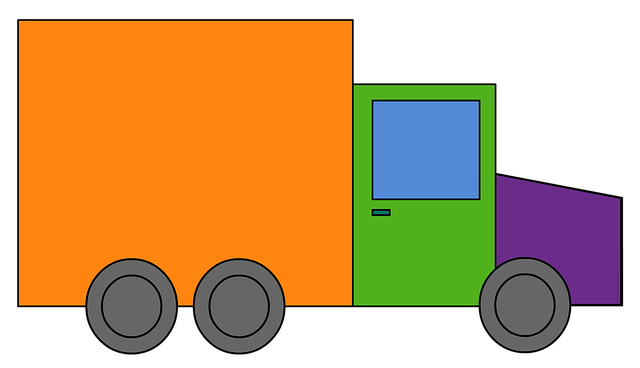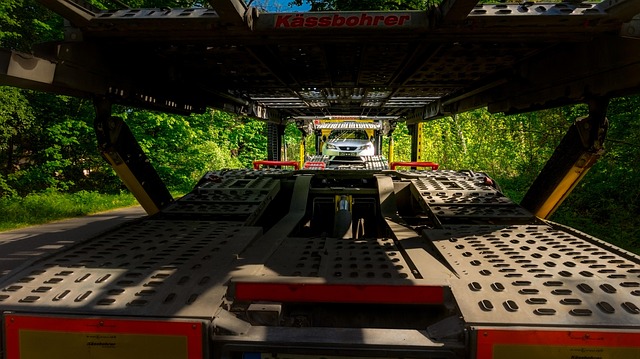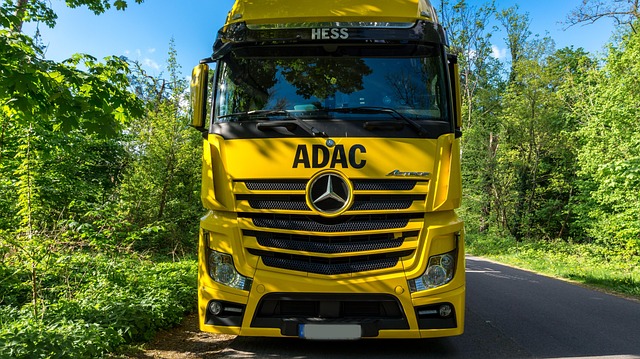Looking to register your car in California? This comprehensive guide walks you through the entire process, from understanding key requirements to securing your license plate. We’ll break down essential steps like gathering necessary documents for VIN verification and completing either an online or in-person registration. Mastering these tasks ensures a smooth transition, so let’s dive into how to navigate California’s car registration system, with a special focus on crucial VIN verification.
- Understand California Car Registration Requirements
- Gather Necessary Documents for VIN Verification
- Perform Vehicle Identification Number (VIN) Check
- Complete Online or In-Person Registration Process
- Pay Registration Fees and Obtain License Plate
Understand California Car Registration Requirements

Before registering your car in California, it’s crucial to understand the state’s specific requirements. One key aspect is ensuring that the Vehicle Identification Number (VIN) on your vehicle matches the one reported on official documents like the title and registration papers. This process, known as VIN verification, is essential for maintaining accurate records and preventing fraud.
In California, you’ll typically need to visit a local Department of Motor Vehicles (DMV) office to register your car. Additionally, consider using mobile vin verification services that provide convenient and reliable VIN inspection solutions. These mobile vin verifiers can help streamline the process by offering on-site or remote checks, ensuring that every detail about your vehicle is accurate before final registration.
Gather Necessary Documents for VIN Verification

Before registering your car in California, make sure to gather all the necessary documents for VIN (Vehicle Identification Number) verification. This process is a crucial step in ensuring that your vehicle meets the state’s requirements and is safe for road use. You’ll need your vehicle’s registration certificate from the previous state, proof of insurance, and a valid driver’s license. Additionally, you might require documentation related to any recent repairs or maintenance, especially if they involve safety-critical components.
For a streamlined process, consider utilizing mobile VIN verification services that can inspect your vehicle at your convenience. These services offer a convenient way to ensure your car is ready for California roads, allowing you to focus on other registration tasks without the hassle of waiting for inspections. With their expertise, you can quickly address any discrepancies and complete the registration process smoothly.
Perform Vehicle Identification Number (VIN) Check

Before registering your car in California, it’s crucial to perform a Vehicle Identification Number (VIN) check. This step is essential for ensuring that the vehicle matches the details provided by its manufacturer and to prevent potential fraud or theft. A VIN verification process helps authorities cross-reference the unique 17-character identifier with official records, confirming ownership and the car’s history.
In today’s digital era, you don’t have to visit a DMV for this check; many services offer convenient mobile vin inspection and verification options. A mobile vin verifier can quickly and accurately pull up detailed vehicle information, including its current and previous owners, service records, and any reported accidents or damages. This modern approach makes the registration process smoother and more accessible, especially if you’re short on time or prefer to avoid crowded DMV lines.
Complete Online or In-Person Registration Process

In California, registering your car involves a straightforward process that can be completed online or in-person at a Department of Motor Vehicles (DMV) office. The initial step for both methods is to gather essential documents and ensure your vehicle meets all legal requirements. This includes verifying the Vehicle Identification Number (VIN) to check its authenticity and history, a crucial step known as VIN verification. For convenience, many residents opt for a mobile VIN inspection or verification service, allowing them to complete this critical part of the process from the comfort of their homes.
Once the VIN is confirmed, you can either register your vehicle online through the DMV’s secure portal, filling out the necessary forms and providing any additional documentation required, or visit a local DMV office. In-person registration involves similar steps but may take longer due to potential wait times. Regardless of the chosen method, ensuring accuracy during the registration process is essential to avoid delays or issues in the future.
Pay Registration Fees and Obtain License Plate

After completing the registration application and providing necessary documents, it’s time to settle the registration fees. These fees vary based on your vehicle type and other factors, but typically include a base cost plus emissions-related charges. Be sure to inquire about any available discounts or waivers you may be eligible for. Once your payment is processed, the California Department of Motor Vehicles (DMV) will issue your license plates.
For a seamless process, consider opting for a mobile VIN inspection or verification service. These services allow you to have your vehicle’s VIN checked remotely, ensuring accuracy and saving you a trip to the DMV. This step is crucial as it verifies your car’s identity and history, which is essential for proper registration.
Registering a car in California involves understanding state requirements, gathering essential documents, passing a VIN verification check, and completing either an online or in-person registration process. Once approved, you’ll pay registration fees and receive your new license plates, ensuring your vehicle complies with all legal standards. Remember, accurate vin verification is crucial for a seamless registration experience.
